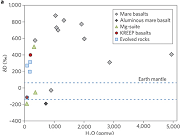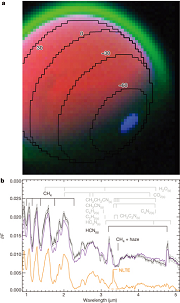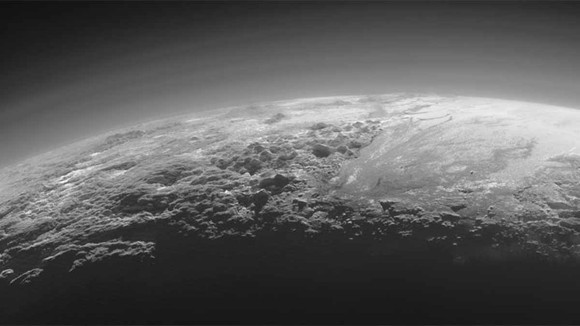The numerous natural satellites of our Solar System belong to a great variety of categories.
They span the ocean worlds of the outer Solar System, some bigger than Mercury, to small rocks like Phobos and Deimos around Mars, with a wide distribution of sizes and physical properties. The following papers present a few examples of this diversity through the Nature family of journals.
 This Nature Geoscience review by Katharine Johnson and Jeffrey Taylor shows how the image of an anhydrous Moon is incorrect, as an in-depth analysis of lunar samples and remote sensing observations bring evidence that water is heterogeneously distributed in our satellite and has different isotopic composition.
This Nature Geoscience review by Katharine Johnson and Jeffrey Taylor shows how the image of an anhydrous Moon is incorrect, as an in-depth analysis of lunar samples and remote sensing observations bring evidence that water is heterogeneously distributed in our satellite and has different isotopic composition.

Titan, a moon of Saturn, is the only satellite possessing a dense atmosphere and has been the target of more than 100 close flybys by the Cassini mission. This study in Nature by de Kok and co-authors shows evidence that Titan hosts an exotic species of cloud, made up mainly by HCN ice, which has formed close to the South Pole. Thus cloud is generated by a sudden cooling of the atmosphere induced by seasonal effects. Caitlin Griffith further analyzes the phenomenon and its meaning for Titan's climate in the related News & Views.
 Cassini discovered an outgassing plume with water vapour on the south pole of Enceladus, suggesting an internal ocean. Hedman et al. show in this Nature paper that the outgassing is regulated by tidal forces from Saturn. The related News & Views by John Spencer underlines the importance of this discovery for geological and geophysical studies. Both are free for a limited time.
Cassini discovered an outgassing plume with water vapour on the south pole of Enceladus, suggesting an internal ocean. Hedman et al. show in this Nature paper that the outgassing is regulated by tidal forces from Saturn. The related News & Views by John Spencer underlines the importance of this discovery for geological and geophysical studies. Both are free for a limited time.

